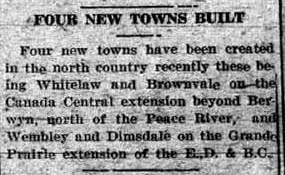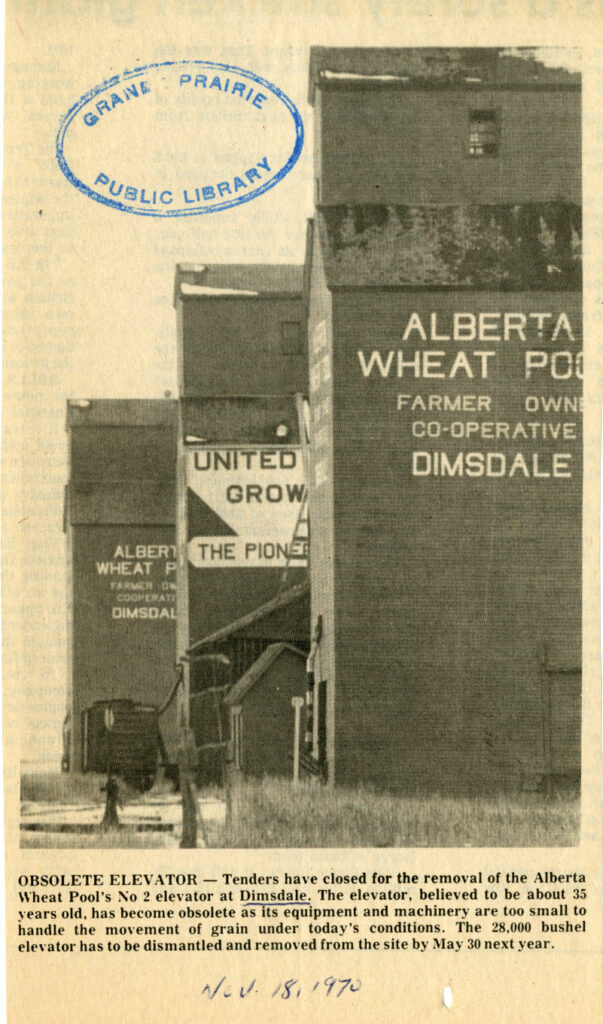On September 23, 1924, an announcement appeared in the Grande Prairie Herald, that a new town had been created on the western extension of the Edmonton, Dunvegan, and British Columbia Railway. It would be called “Dimsdale”, after Henry George Dimsdale, a locating engineer for the railway.
The original name of the district was Spring Lake, after the small spring-fed lake which is now Dimsdale Lake. As fertile farm and prairie land, it was snapped up for homesteads as soon as it was surveyed in 1909. By 1912, there was already a school on the south shore of the lake, first named Greystone and then Wapiti School District when it was moved 1 ½ miles west of the current hamlet.
In 1926 the railway was built and the townsite laid out next to the railway track. Rapid development followed. Besides the railway station, there was two stores and some residences. Ramsfield’s Store contained the post office, opened in September 1927. The United Grain Growers elevator was also built that year and boasted it had “been taking in wheat steadily; that is, when it was not too full to take in any more. Three times it has been filled to capacity and over 100,000 bushels have been received.” Eventually there were three elevators, as this Herald-Tribune newspaper photograph from November 1970 shows.
In the mid-1930s, a badly-needed community hall was built, and in the 1950s, a curling rink. There was also the Hystad Bros. Planing Mill—they drilled the first community water well across the tracks from the store. In the country near the hamlet were the Spring Creek Presbyterian Church and Cemetery to the south, and Wapiti School to the west.
There were many active community organizations such as the United Farmers Association and United Farm Women, and the Dimsdale Women’s Community Circle whose records are archived at SPRA.
Wapiti School District was centralized to Wembley in 1955, but the school, converted to a home, is still on its original site. The post office and store also closed in 1967, and the Dimsdale Hall is the only active community building remaining in the hamlet.
If you have records or photographs of Dimsdale that you would like to archive, please give us a call.
By Executive Director Mary Nutting


